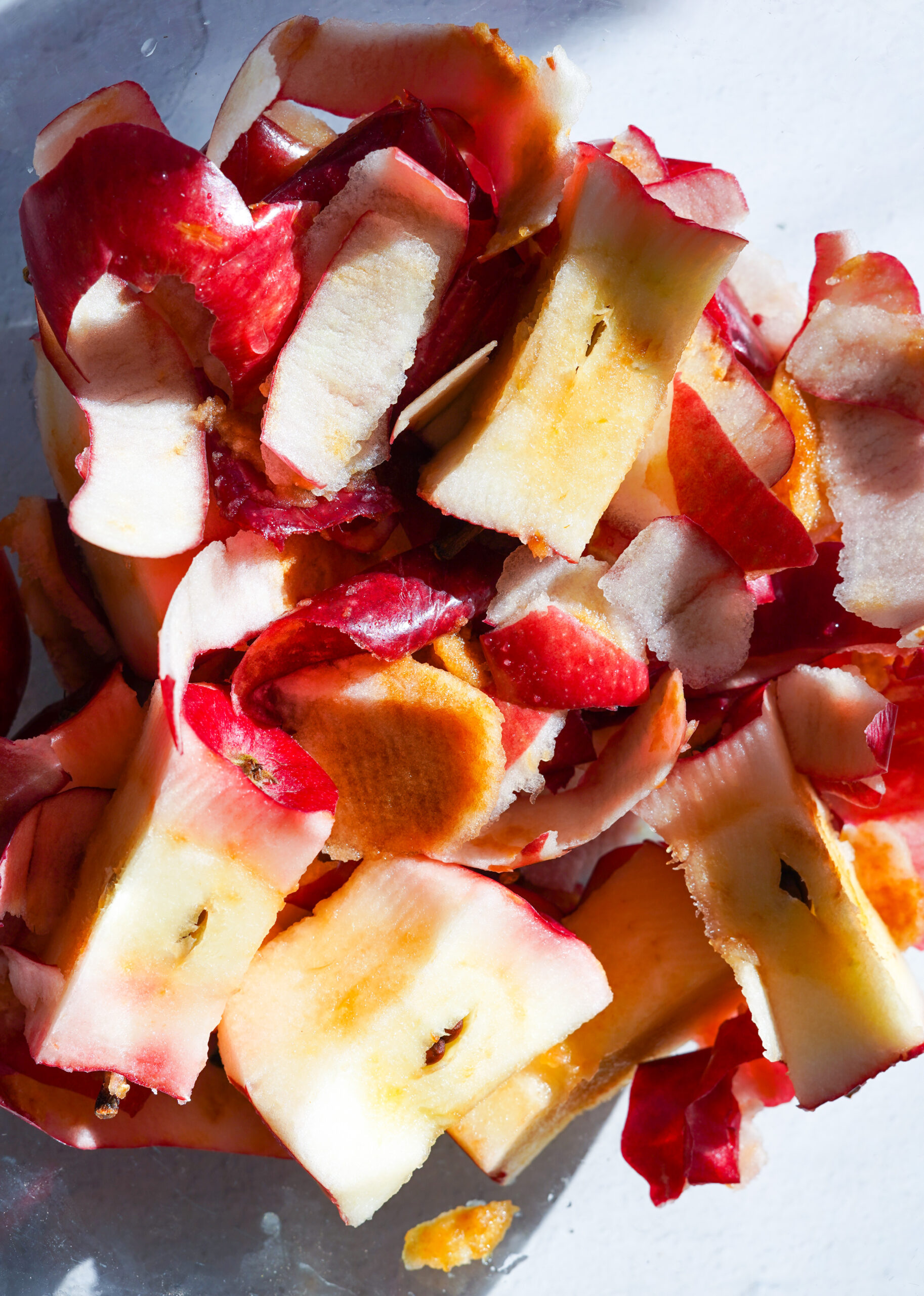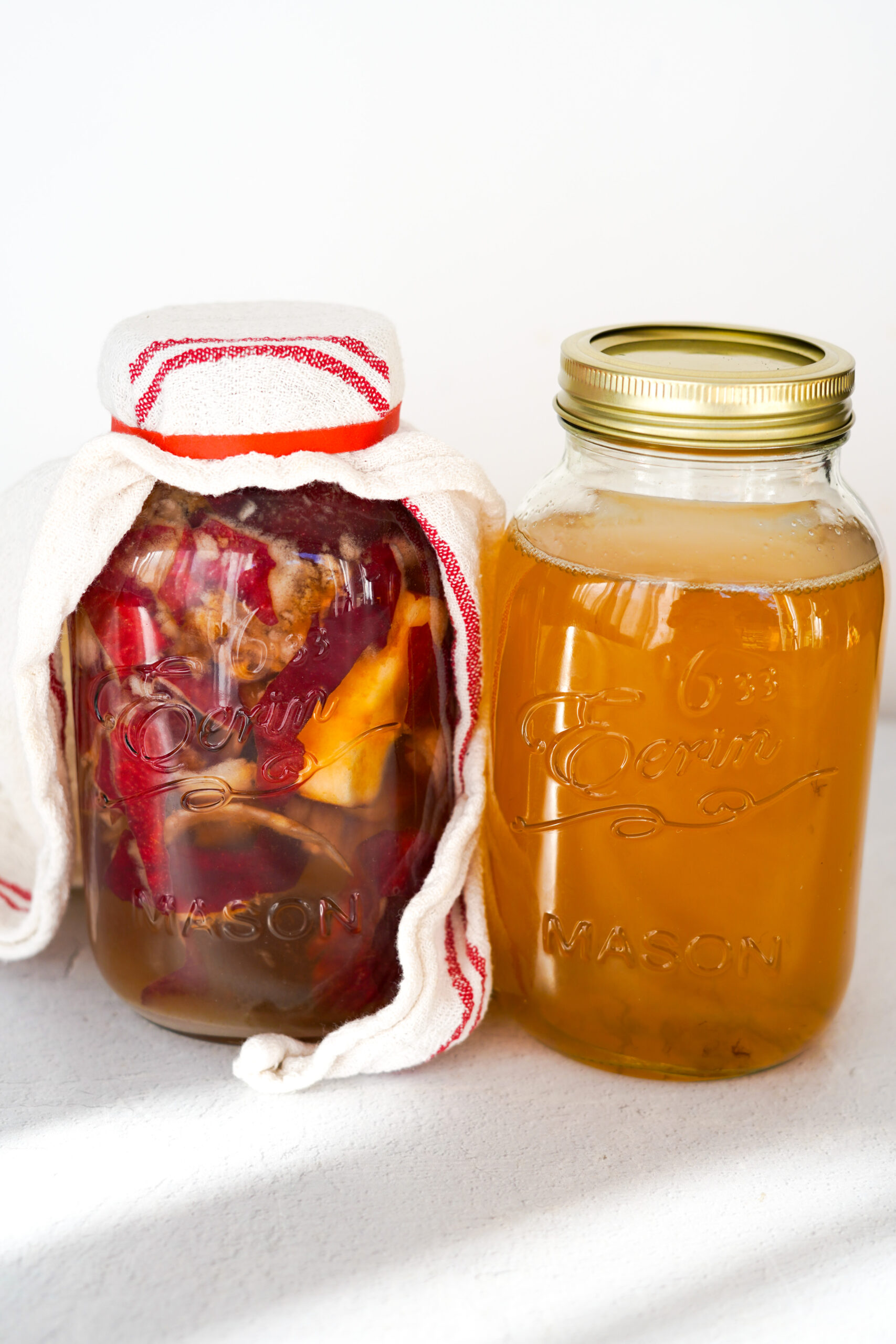How to Make Homemade Apple Cider Vinegar
In recent years, apple cider vinegar has become a staple ingredient in many households. But did you know making homemade apple cider vinegar is super-easy and virtually free?

There is no denying that apple cider vinegar is a great staple for your kitchen. It can enhance the flavor of salads, stir fry dishes, soups, and even popcorn. In plant-based cooking, it’s often used to create dairy-free cheese alternatives, so that we can still enjoy treats such as mozzarella sticks or the famous baked feta pasta.
In addition to the great flavor, apple cider vinegar is a natural preservative and disinfectant. You can use it to pickle veggies, as well as clean your house! Isn’t that neat? (pun intended)
The thing is, good apple cider vinegar can be quite expensive. But what if I told you you can easily make homemade apple cider vinegar using food scraps? That’s right, I am back with another Scrappy Cooking recipe!
Why You’ll Love This Recipe
- This recipe uses apple skins and core, thereby reducing your household food waste.
- Homemade apple cider vinegar is made with only three ingredients, two of which are virtually free!
- By making the vinegar yourself, you can ensure there are no unnecessary additives.
- There is very little involvement with the process. Once the ingredients are combined, all you have to do is wait for the fermentation process to happen.
- You still get to enjoy the rest of the apple! Whether you just want a quick snack or a warming apple pie oatmeal, you get two items for the price of one!

How to Make This Recipe
First, make sure your hands and your jar are clean. We want to make sure bacteria or fungi don’t interfere with the natural fermentation process. There are a few different ways to sterilize your jars depending on your kitchen equipment and the size of the jars, of course.
Add the sugar and apple cores (and apple skins, if using) to a sterilized jar. Give it a stir, add a lid with either cheesecloth or a coffee filter on top, and set it in a warm place in your pantry for two weeks. I recommend that you set a reminder for yourself because it can be easy to forget!

After two weeks, remove and compost the apple cores, and allow the mixture to ferment for an additional two weeks. If your vinegar fizzes, it’s a sign that fermentation is still in progress. At this point, do not bottle it unless you plan to pasteurize the apple cider vinegar. Otherwise, the pressure will build up in the bottle and the bottle may explode.
The vinegar is ready when it is tangy and tastes to your liking.

Hack It!
- By adding some strawberry tops to your homemade apple cider vinegar, you can combine two Scrappy Cooking recipes to create a beautiful combo!
- If you don’t have enough apple scraps for a whole jar of apple cider vinegar, you can actually freeze them! Once you have accumulated enough, use the frozen skins and cores just as you would fresh.
- You might see a scoby or the “mother” form. It looks like a jellyfish floating at the top. That’s is actually a great sign and the scoby can be used as a starter for future batches!
- If your homemade apple cider vinegar is not done fermenting, yet the acidity is perfect for your taste, you can stop the fermenting process by pasteurizing it with heat.
- Use the vinegar in salad dressings, soups, stews, and more!
Other Recipes You’ll Love
Not sure what to do with your apples? Check out the PlantYou meal planner! Customize your weekly menu by choosing from a huge database of over 500 plant-based recipes. Toggle the number of servings you want to make and enjoy the perks of autogenerated shopping list you can take to the store!
You can also now preorder the PlantYou cookbook! It features over 140 recipes, suitable for breakfast, lunch, dinner and dessert! Additionally, it has salad dressings and dips where you could put your homemade apple cider vinegar to use.

The Recipe: Homemade Apple Cider Vinegar
Ingredients
- 4 apple cores
- apple skins
- 2 cups warm water
- 3 ½ tbsp sugar
Equipment
- Clean jar
- Cheesecloth or coffee filter
Instructions
- In a sterilized jar, add the sugar and apple cores. Give it a stir, add a lid with either cheesecloth or a coffee filter on top, and set in a warm place in your pantry for two weeks.
- Compost the apple cores at this point, and allow the mixture to ferment for an additional two weeks.
- The vinegar is ready when it is tangy and tastes like vinegar to your liking.



Pingback: Green Broth Bombs - PlantYou